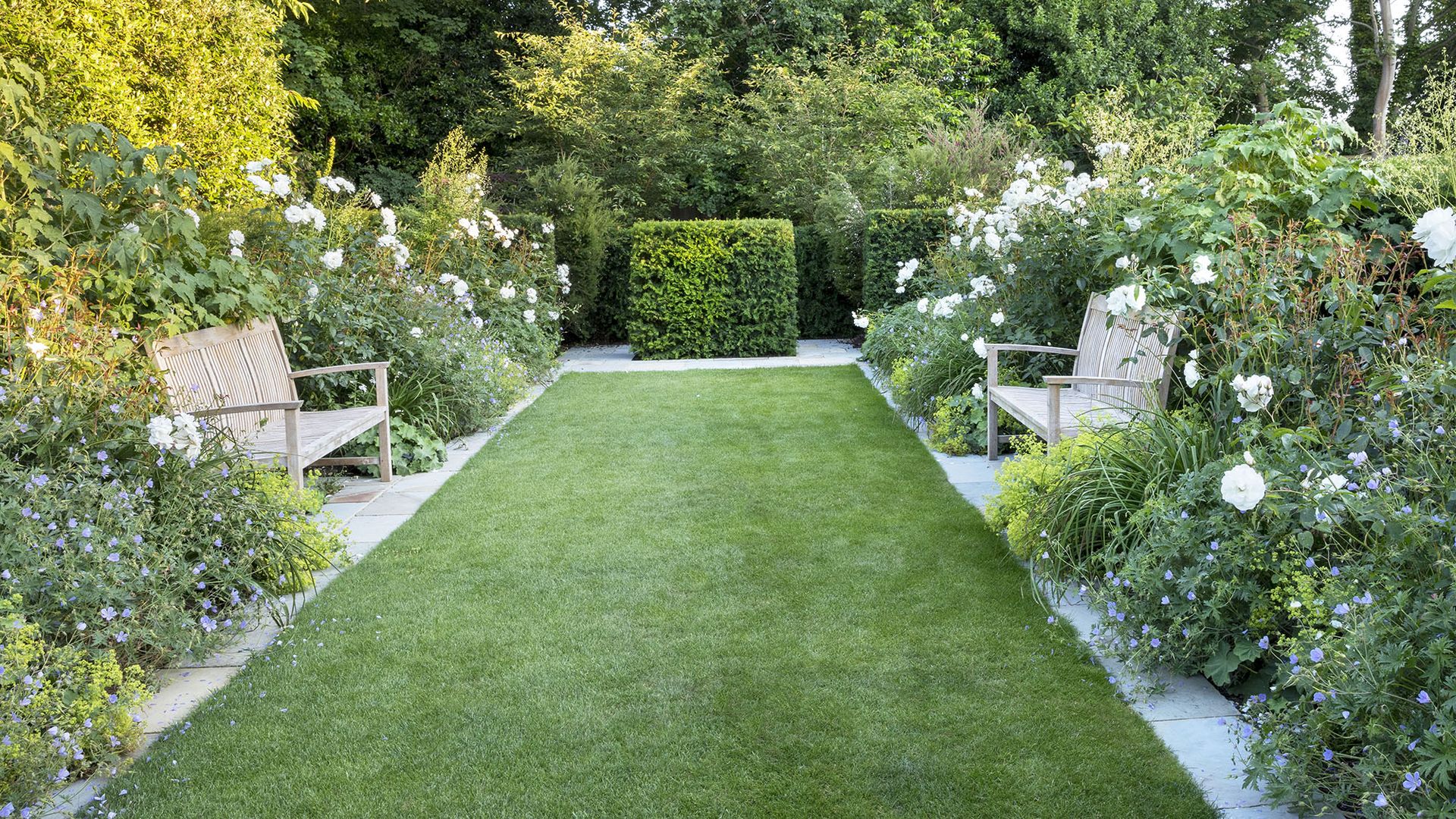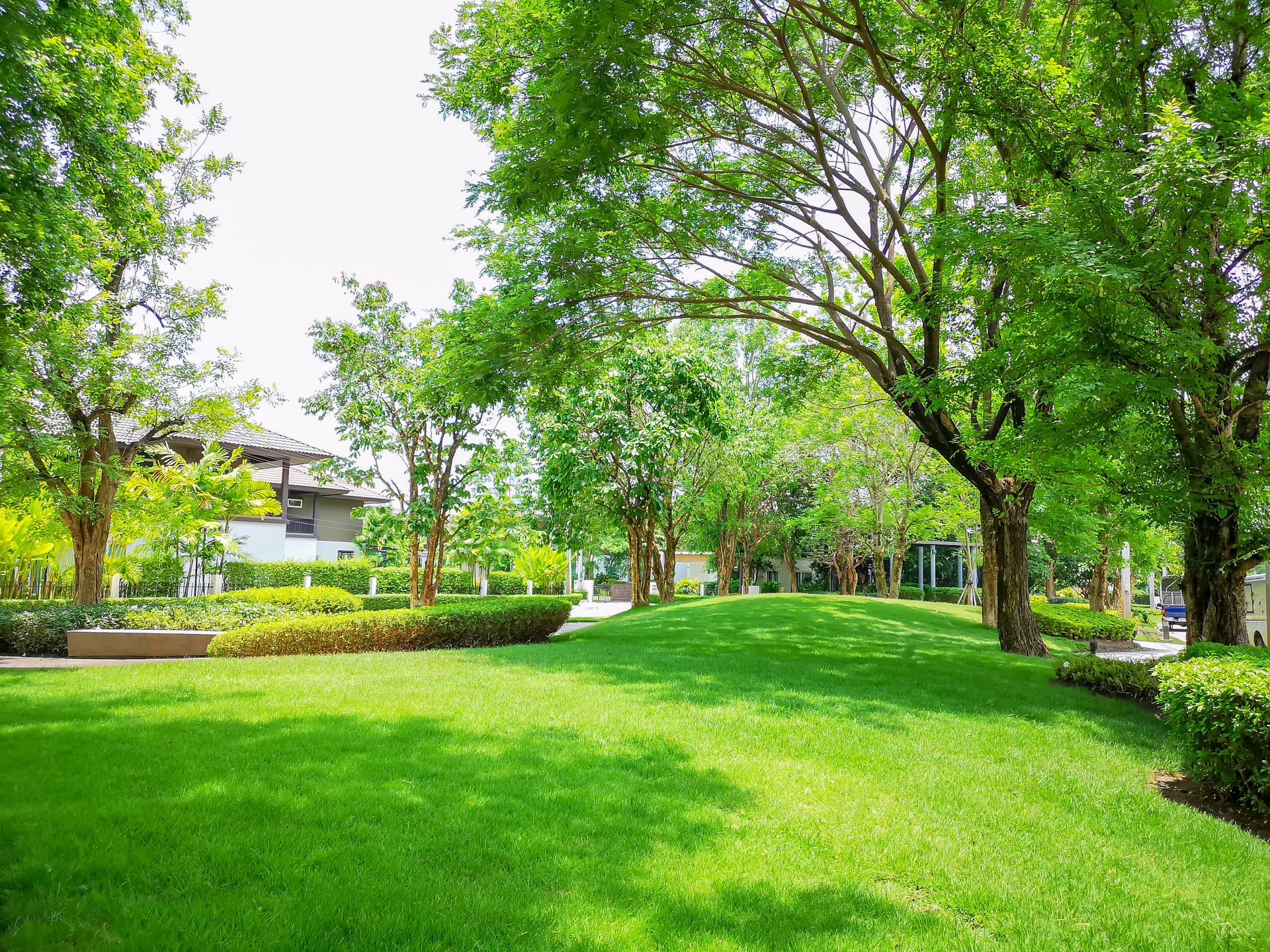How to plant grass seed – for a luscious and healthy lawn
Follow this guide on how to plant grass seed for a wonderfully lush, green lawn or to repair bare spots
- (opens in new tab)
- (opens in new tab)
- (opens in new tab)
- Sign up to our newsletter Newsletter


Many gardeners crave a healthy green lawn, and knowing how to plant grass seed correctly is the most important first step in achieving luscious, soft grass.
A pristine lawn can make all the difference to the appearance of your backyard and is a year round feature of your garden to enjoy. If you choose the best fast-growing grass seed you can quickly see the results.
An important element of how to plant grass seed is getting the timing right, so make sure you first know when to plant grass seed in your zone to get off to a good start, and give the grass seed the best chance of germinating and producing healthy green blades.
Whether you are sowing a new area of lawn, or repairing patches in grass, you need to know how to plant grass seed to ensure success.
How to plant grass seed – what you need
Learning how to plant grass seed is an easy job for any gardener that requires only basic tools. To reseed small patches, you will simply need a garden fork, rake, grass seed and fertilizer.
If you are covering a large area, it will save you time to invest in a seed spreader. These can be bought inexpensively from garden centers or Amazon (opens in new tab).
You may also want to use an aerator to loosen compacted soil and help distribute water and nutrients.
To get the best out of your lawn once it is planted and grown, set it off with stylish lawn edging ideas and care for it with one of the best ride-on lawn mowers. If your grass starts to lose color, then find out when to add lime to lawns to get it back to a luscious, green state.

What month should I plant grass seed?
The best month to plant grass seed will depend on the hardiness zone where you live.
‘Spring is a great time to fix those bare patches and the earlier we do it in the season, we will find that nature gives us a helping hand,’ says David Hedges Gower, chairman of the Lawn Association (opens in new tab).
Early fall is also a good time to plant grass seed for a new lawn.
However, once the grass and lawn is more established, you can plant grass seed throughout the summer. 'Healthy grass is consistent and if you find that you have a couple of bare spots in your lawn then you may want to consider overseeding. This is a great way to sow new seed over existing lawn and can lead to fuller looking grass,' says Chris Bonnett, founder of GardeningExpress (opens in new tab).
The best grass seed to use
Choosing the best grass seed will depend on your location, how much sunlight the lawn receives, and whether it needs to be durable enough to withstand backyard soccer games.
‘Identifying what grass currently grows in your lawn will give you a great indicator of what likes to grow there,’ says Hedges Gower. ‘Choosing the same variety makes success far easier in the long run.’
Grasses are broadly made up of cool-season and warm-season varieties – which type you choose will depend on your local climate.
Cool-season grasses include fescue, ryegrass, Kentucky bluegrass and bentgrass, which grow better in cooler climates. Bentgrass and fescue are widely used in seed mixes, while ryegrass is particularly tough so a good choice for families.
Also known as Southern grasses, warm-season grasses include Bermuda grass, zoysia grass, St. Augustine grass and centipede grass. They thrive in areas with hotter summers and milder winters.
Bermuda and zoysia grasses are widely used throughout the south, while centipede grass is a good low-maintenance choice. St. Augustine is more shade tolerant than other warm-season grasses.
Many lawns are made up of a seed mix, rather than a single variety. ‘Seed mixtures are generally a blend of species to suit most lawns and guarantee a better strike rate,’ says Hedges Gower.
‘However, be aware that seeding ryegrass, for example, into a traditional lawn mixture will stand out like a sore thumb, and vice-versa.’
Options include luxury lawn mixes, shade-tolerant mixes, hardwearing family mixes, and fast-growing varieties. Choose a mix compatible with your climate and garden conditions.

How to prepare lawn for seeding
Good preparation is the most important aspect of learning how to plant grass seed. Luckily, getting it right is easy.
‘To prepare your soil before planting grass seed, simply till and loosen the soil to create the best growing conditions – you don’t need to put down topsoil,’ says Jeremy Yamaguchi, CEO of Lawn Love (opens in new tab).
To till the soil, Hedges Gower recommends using a fork to lightly dig it over to a depth of about 2-3 inches. ‘This will allow new seedlings to take root,’ he says.
Remove any rocks and weeds as you go, but don’t apply weed killer as this will hinder growth.
'If possible, leave the seed bed for a few weeks and then get rid of any weeds and rake in some lawn feed before sowing,' says the experts at Johnsons Lawn Seed (opens in new tab).
If you are applying seed to cover patches in a large lawn, it's a good idea to use an aerator to punch holes into the ground and pull up small plugs of turf and soil.
'Doing this has two benefits. The first is that some seed will fall into the holes and improve germination. The second is that aerating the soil reduces soil compaction and improves water infiltration,’ says Landscape Tutor (opens in new tab) Brian Walker. You can buy aerators on Amazon (opens in new tab).
To give your grass seed a helping hand, it's important to feed it. Depending on the product, you can apply pre-seeding fertilizer at the preparation stage, or you can wait until after you have sown the seed to use starter fertilizer.
Rake the soil level before planting the grass seed.
How to sow grass seed
For small areas, it's easy to sow grass seed by hand. ‘Carefully spread the seeds on the ground and cover them with about a quarter of an inch of soil,’ says Noah James, owner of Liberty Lawn Maintenance (opens in new tab).
'Moisten the ground, mix the seed and scatter it evenly. Sow 1 1/4 ounces of seed per square yard (35g per square meter) half from right to left and the other half from left to right to ensure a good coverage,' add the experts at Johnsons Lawn Seed.
For larger areas, use a spreader to sow the seed. ‘Trying to use your hands for large areas can lead to very uneven coverage of grass seed,' says Walker. 'I have found that push rotary spreaders do an excellent job. They apply the seed at a consistent rate for uniform coverage.’
Once you have sown your seed, carefully cover the seeds over with soil using either your hand or a rake.
‘Press the seeds down by standing on them or using a tool like a roller, because they need a firm seedbed,’ adds James.
Take care not to plant the seeds either too deep or shallow. ‘Bury them too deep and they will take longer to germinate. Too shallow and the seeds will be prone to drying out or being eaten by birds,’ says Hedges-Gower.
Once you have planted your grass seed, you can apply starter fertilizer if you didn’t do so prior to planting. Water immediately. 'In case of dry weather use a fine spray to keep the seed bed well watered and moist,' add Johnsons Lawn Seed experts.

Should I put topsoil over grass seed?
Do not put top soil over grass seed, but you can add a thin layer of organic matter to help the seed to germinate.
‘Never put topsoil over newly planted grass seed,’ says Yamaguchi. ‘This won’t provide healthy growing conditions – it will actually prevent the seedlings from sprouting by essentially suffocating them.’
‘Leaves, straw, and peat moss can be used to help hold moisture for the seed to germinate and grow,’ adds James.
Once the grass is more established then 'top dressing is something you can do a couple of weeks after fertilizing a lawn if you’re really keen for your grass to grow. Mix together materials like sand, soil loam and peat and apply this to your dry grass. The materials will transfer nutrients back into the soil and promote growth,' says Chris Bonnett.
How often should you water grass seed?
How often you should water grass seed will depend on the weather conditions and climate where you live. Watering is an important part of establishing your new grass, but be careful not to overdo it.
‘Too much water can make it sit too wet and too dry won’t allow the seed to germinate,’ says Hedges Gower.
‘As a rough guide, a patch of around 3x3 feet (1x1 metre) should need about 15-30 seconds of water every 2-8 hours, depending on how warm the weather is.’
Always check to feel how damp the soil is before applying more water.
Once the grass is established, only water when needed and know when to water grass. 'Overwatering grass can lead to its demise and therefore grass should be watered during the cooler time periods and only once a week. When watering grass you are looking to water deeply to ensure there’s enough water to see through a drought, 'add the experts at Marshalls (opens in new tab).
To encourage strong, vigorous growth, How Cobra, manufacturer of garden lawnmowers, recommends watering lawns early in the morning when heat is at a minimum to reduce the amount of evaporation. 'This allows water to penetrate the deeper into the root. An infrequent yet heavy dose of water is also recommended as it’s one of the most effective ways of stimulating stronger grass growth.'
Water butts are also a great way to collect and reuse any rainwater so that it can be saved to keep lawns hydrated and gardens watered as a sustainable garden idea.

How do you maintain brand new grass?
Feeding a new lawn is one of the most important steps to maintaining it after you have mastered how to plant grass seed .
‘Seedlings require a lot of food in the initial germination phase. We need to turn this into a nice lush adult grass plant as quickly as possible,’ says Hedges Gower.
Feed your lawn every 4-8 weeks until it is well established, then twice a year.
Don't reach for the lawnmower too quickly. New lawns shouldn’t be mowed until the grass reaches three inches tall. Make sure you know how often you should mow your lawn so you don't destroy all of your hard work in planting grass seed.
'Reseeding lawns after heavy footwall will help recover dull patches and bring back its lush color,' add the Cobra experts.
‘If filling in patches, continue to mow the lawn as usual but keep the blade slightly higher in order to allow the new seedlings a better chance to absorb more food and water,’ says Hedges Gower.
In addition, know how to aerate a lawn to improve a lawn's overall health, and try to keep pets off the grass as their urine is high in nitrogen, which can easily scorch lawns when undiluted.
What is the easiest way to plant grass seed?
The easiest way to plant grass seed is by hand.
‘Carefully spread the seed throughout the areas where you want to see new growth occur,' says James. 'Lightly water thereafter in order to soak the seeds and help encourage new growth.’
Will grass seed grow if you just throw it on the ground?
Grass seed will not grow well if you just throw it on the ground. While you might be lucky and some grass seeds will take root, for a healthy patch of grass or lawn, it requires more care and attention, as outlined above.
It's worth your time and effort learning how to plant grass seed as 'the cheapest way to get a thriving garden is by growing a lawn by seed, as turf isn’t cheap and can be difficult to lay. With seeding, you’ve got much greater control over which species of seed are going into your new lawn,' explains Carlos Real, managing director of TotalLawn (opens in new tab).
How can I make grass seed germinate faster?
To make grass seed germinate faster:
- Choose the best grass seed for the location
- Prepare the area by raking the soil to loosen it, removing stones and weeds
- Apply a pre-seeding fertilizer and water the soil
- Apply seeds evenly over the area, press them down and keep the soil moist
- Apply a fertilizer after sowing if you haven't beforehand and then feed the emerging grass about every month.

As editor of Period Living, Britain's best-selling period homes magazine, Melanie loves the charm of older properties. I live in a rural village just outside the Cotswolds in England, so am lucky to be surrounded by beautiful homes and countryside, where I enjoy exploring. Having worked in the industry for almost two decades, Melanie is interested in all aspects of homes and gardens. Her previous roles include working on Real Homes and Homebuilding & Renovating, and she has also contributed to Gardening Etc. She has an English degree and has also studied interior design. Melanie frequently writes for Homes & Gardens about property restoration and gardening.
-
-
 Vitamix E310 Explorian Blender review: is Vitamix's basic blender worth it?
Vitamix E310 Explorian Blender review: is Vitamix's basic blender worth it?We put the Vitamix E310 Explorian to the test to see if this entry-level blender is as good as the rest of the brand
By Helen McCue • Published
-
 Super Bowl party checklist – everything you need to get ready for the big game
Super Bowl party checklist – everything you need to get ready for the big gameGet ready for game day with the ultimate Super Bowl Party checklist
By Zara Stacey • Published

